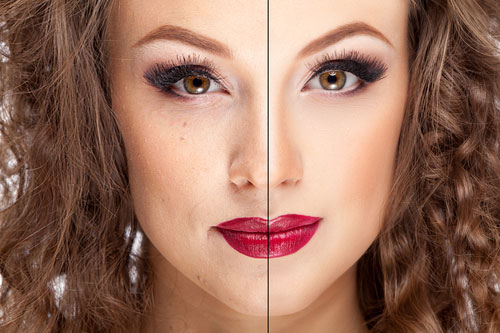Choosing the right hair shampoo is the foundation of hair care. The health of the hair, its appearance and the condition of the scalp depend on how well the product is chosen. In this article, we will analyze how to choose a good shampoo for your hair and what you should pay attention to.
1. Shampoo according to hair type.
The first place to start is to determine your hair type. Different hair types require different care, so it's important to choose a product that will meet their needs.
Shampoo for dry hair
If you have dry and damaged hair, look for a sulfate-free shampoo for dry and damaged hair. These shampoos gently cleanse without drying out the hair, which is especially important for those with hair prone to breakage and moisture loss.
Shampoo for oily hair
For oily hair owners, a shampoo for oily hair with balancing ingredients, such as green tea extract or menthol, that help regulate sebum production, is a good choice.
Shampoo for colored hair
For those who dye their hair, the best sulfate-free shampoo for color-treated hair that gently cleanses the hair without washing out the color and protects it from external factors is ideal.
2. Effect of shampoo composition on hair health
When choosing a shampoo, it is important to pay attention to its composition. Sulfate-free shampoos have become a real hit due to their gentle attitude to the hair. They do not contain aggressive detergents that can dry out the scalp and hair.
Sulfates and their effect on hair
Sulfates such as SLS (sodium laureth sulfate) are added to shampoos to create a rich lather. However, they can dry out hair and cause scalp irritation. If you have sensitive skin or dry hair, you may want to consider sulfate-free shampoos.
Natural shampoos and their benefits
If you prefer care with natural ingredients, look for natural organic shampoo for sensitive scalp. Such products contain beneficial plant extracts, essential oils and no harmful chemical ingredients, making them ideal for people with sensitive skin and allergies.
Moisturizing ingredients in shampoos
To moisturize your hair, choose shampoos with ingredients such as glycerin, aloe vera or shea butter. These ingredients help maintain natural moisture levels, prevent breakage and leave hair soft.
3. natural and organic shampoos
Natural shampoos based on organic ingredients are becoming increasingly popular. Organic shampoo with essential oils gently cares for hair without causing irritation, making it a great choice for all hair types.
Benefits of shampoos without silicones
Silicones are often added to shampoos to add shine and smoothness to hair, but they can create a film that prevents hair nourishment. Therefore, it is better to choose a shampoo without silicones, especially if your hair tends to be oily.
Essential oils in natural shampoos
Many natural shampoos contain essential oils that not only give your hair a pleasant scent, but also provide additional care. For example, lavender oil soothes the scalp and tea tree oil helps fight dandruff.
Choosing the right shampoo is the key to the health and beauty of your hair. Taking into account your hair type, composition and scalp needs, you can choose a good shampoo for your hair that will provide it with gentle care, health and beauty. Choose sulfate-free shampoos if you want to avoid over-drying, and don't forget about natural and organic products if you're looking for eco-friendly and safe care.
The most serious approach to choosing of shampoo for beautiful hair for those with oily hair. Such hair has to be washed almost every day. As a result, day after day while washing with alkaline shampoos, the hair's natural defense is removed. And if it is not restored, hair can break, split at the ends, electrified. To protect oily hair from the destructive effect of alkaline shampoos, the famous brand "Guam" produces a unique product - guam mask. Mask-shampoo for oily hair is a lifeline for those who wash their hair every day.
Composition of shampoos
Shampoos contain detergents (detergents or surfactants, surfactants), foaming agents, conditioners, thickeners, contrast agents, softeners, complexing compounds, fragrances, preservatives and special additives. Detergents or surfactants are substances that are mainly designed to remove sebum and dirt. However, excessive sebum removal makes hair dull, susceptible to static electricity and difficult to comb.
Unwanted surfactants in shampoos:
Lauryl sulfates (sodium lauryl sulfate, triethanolamine lauryl sulfate, ammonium lauryl sulfate) are present in most shampoos as the main surfactants, because they rinse the hair perfectly in both hard and soft water, create a good lather and rinse out easily. Substances of this group have good cleansing properties, but they make hair stiff and can irritate the skin and cause various allergies.
PowerfulPAVs in shampoo formulations:
Laureth sulfates (sodium laureth sulfate, triethanolamine laureth sulfate, ammonium laureth sulfate) create a good lather, provide good cleansing; these substances leave the hair in good condition after washing. - They create a good lather and provide good cleansing; after washing with these substances, the hair remains in good condition. Laureth sulfates are also the most used surfactants. They have fewer side effects.
Weak surfactants in shampoo formulations:
Sarcosines (lauryl sarcosine, sodium lauryl sarcosinate) have unsatisfactory cleansing but excellent conditioning properties. - have unsatisfactory cleansing but excellent conditioning properties.
Sulfosuccinates (disodium oleamine sulfosuccinate, sodium dioctyl sulfosuccinate). This group of surfactants is usually used as additional surfactants, e.g. in shampoos for oily hair.
Foaming agents are added to shampoos to create gas bubbles in the water. Many consumers believe that shampoos that create a lot of foam have better cleaning properties than shampoos that create less foam. This is not the case. As the shampoo removes sebum from the hair, the amount of lather will increase because the sebum inhibits the formation of bubbles. This chemical reaction is the reason why the amount of lather increases when you rinse your hair again, which is when most of the sebum has already been removed in the first rinse.
Some shampoos contain substances designed to change the pH level. This allows manufacturers to advertise them as "pH balanced". Most shampoos are alkaline formulations, which can cause the hair shaft to swell and make it more vulnerable to damage. For people with healthy, non-porous hair with intact scales, this fact is not a threat. However, people with damaged hair or hair that has been treated with chemicals should avoid swollen hair. For this purpose, shampoos with acidic pH levels should be chosen to balance the pH of the hair.
Thickeners and contrasters are not components that cleanse the hair. They make the shampoo itself more attractive to the consumer. Many people mistakenly believe that a thick shampoo has a higher concentration of different substances than a liquid shampoo; some people prefer opaque shampoos or shampoos that have a pearlescent cast. But all these preferences have nothing to do with the quality of the shampoo.
How to take care of your hair, read on here.






